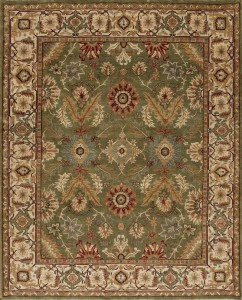The Rug Renaissance Part 5
By now, we’ve gone over most of the events that shaped the rug renaissance.
If you’ve missed any of the blog posts about it, or just want to refresh your memory, you can read more here.
However, there was one more major contributing factor: technology. Overall, the Oriental rug industry is pretty low-tech, but even it benefits from modern day advancements in technology.
First and foremost, the information now available to rug makers and producers is outstanding. Advancements in the technology of making color separations—which are then used to make color plates for publication—has allowed for the price of color plates to decrease significantly. This means that it’s not uncommon to find rug books with hundreds of color plates. Rug makers also have access to thousands of pictures of rugs from the past four decades, catalogs from rug exhibitions, and books and catalogs of color plates to draw inspiration from.
Maybe even more important than that are the advancements in travel. Western rug makers can take frequent trips to India, Pakistan, or China to oversee production. Inexpensive and fast travel allows for rug makers to fly from country to country to oversee every step of the production process.
Improvements to communication technology have also made a huge difference. These advancements allow for custom orders to be made via phone or email, as well as quick communication between rug importers and sellers, or rug makers and the supervisors running their rug production.
In summary, the rug renaissance began with a renewed interest in oriental rugs in the 1960s—an interest that has only increased over the years. Initially, people were interested in village and tribal rugs, but those were hard to come by and, therefore, very expensive. In the 1980s, Americans living in Turkey were exposed to larger rug productions, took that idea, and perfected it, creating less expensive alternatives to the antique rugs that were available.
Around 1985, Americans and Europeans in Nepal partnered with Tibetan refugees to fulfill the Western world’s desires for decorative carpets. They improved the quality of rugs and experimented with color and design. The commercial success of these rugs led to hundreds of rug makers experimenting with rug design as well.

